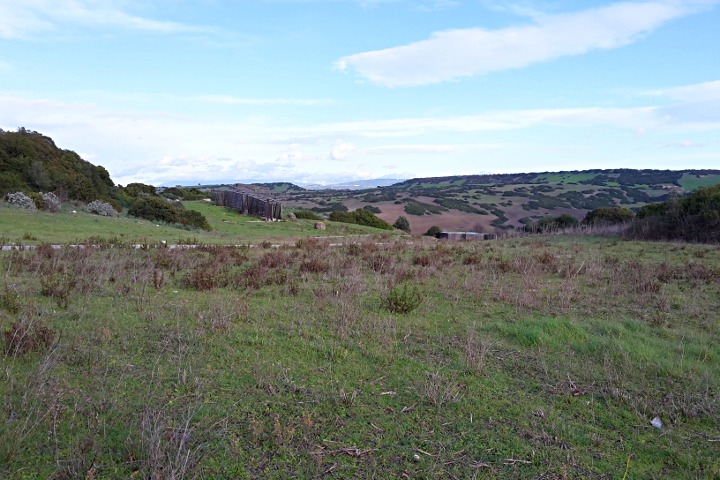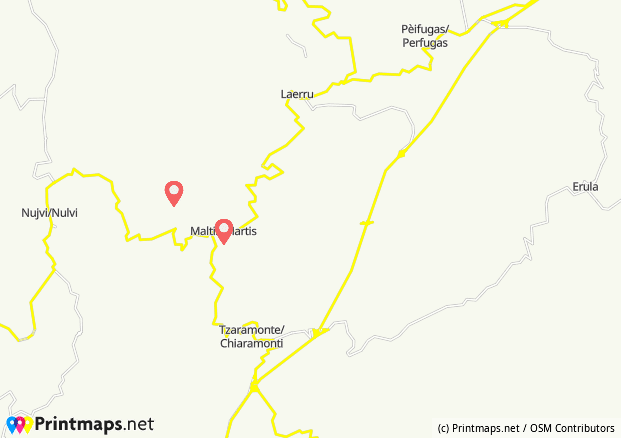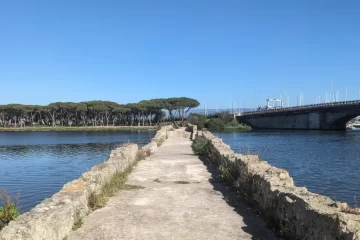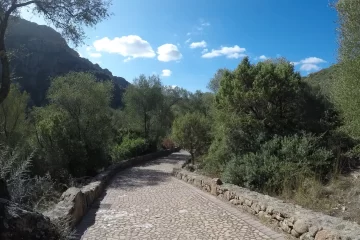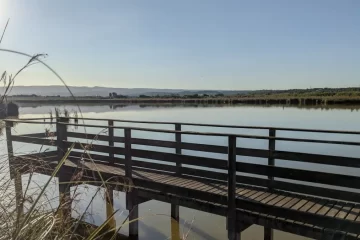Martis, small hill town in northern Sardinia with not even 500 inhabitants and not well known by tourists, was the destination of our trip.
The presence of paths for outdoor walks, and many panoramic points make it an interesting destination.
Not being able to travel in the last few days, we will show you photos of a winter day … Of course, the colors are softer and the meadows have less flowers, compared to spring. Anyway, a walk around here will be pleasant in every season of the year!
Triulintas waterfall
To the west of Martis, a small road crosses fields and pastures; you will find it following the sign for the waterfall and the Triulintas mill. In the first part of the road you go by car or motorbike, up to the beginning of a small valley in the hills.
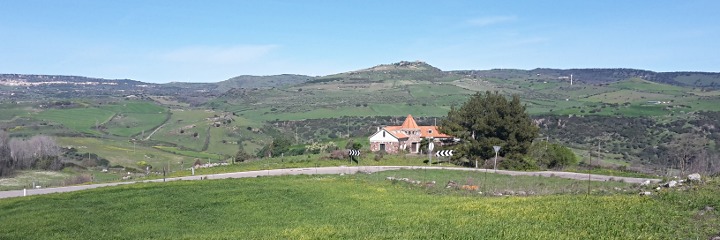
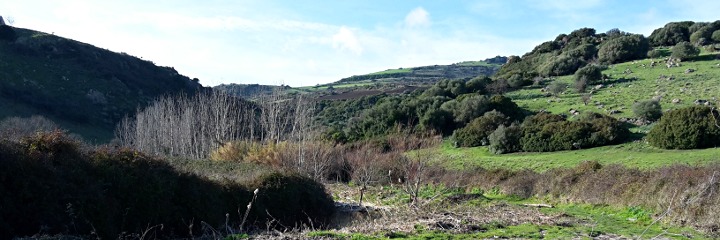
Here we take a small path that runs alongside the stream, among the vegetation. The sound of flowing water accompanies us throughout our journey… The itinerary continues with the dense vegetation surrounding the path.

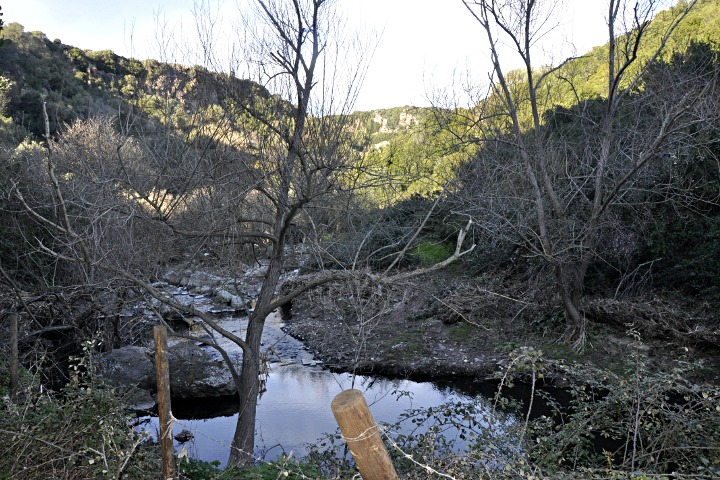
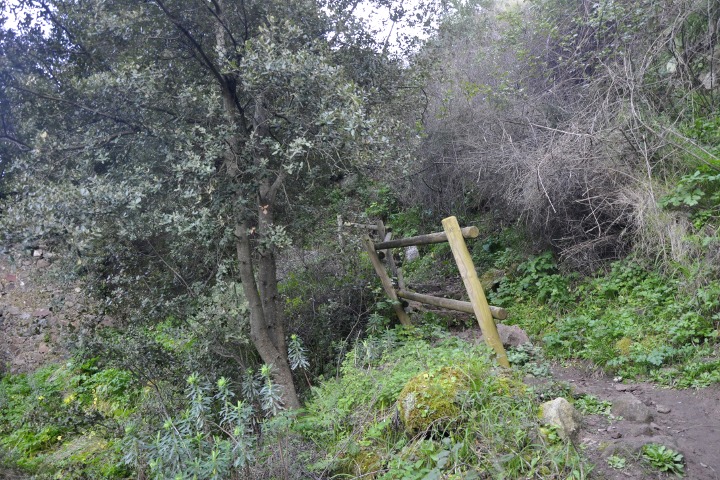
Only in the last part, the more intense noise of the water makes us understand that we have almost reached the destination. Among plants and shrubs, we found a waterfall of almost 20 meters… In front of our eyes appears the surprising vision of waters falling into a lake!
It is an almost fairytale landscape, wonderful to take some photos…
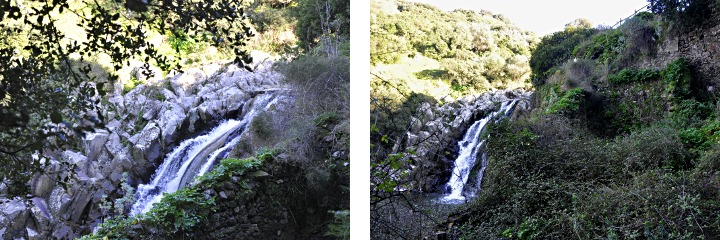
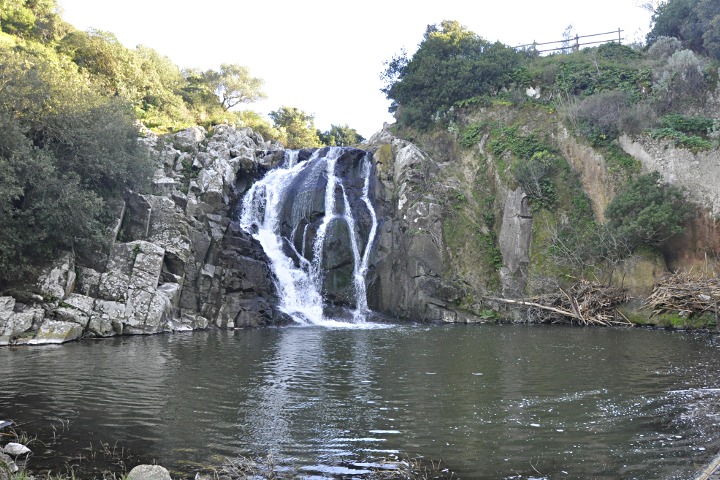
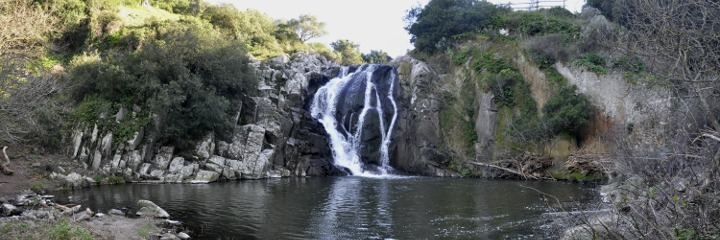
The lake is bounded to the south by steep rock walls, on the other sides it is surrounded by thickets.
In this apparently uncontaminated place, however, we find traces of the human presence; on the side of the waterfall we observe sections of ancient walls … These are the remains of the Triulintas mill.
Built to capture the energy of the waterfalls and transform it into mechanical force, this structure remained in use until the middle of the 20th century. Unfortunately we do not know exactly in which historical period it was built, also because these buildings were often subject to maintenance and changes over the centuries; but surely this type of works (vertical hydraulic mill or Vitruvian mill) was born in Roman times and it had spread considerably in the Middle Ages, also in Sardinia.
Since the 1950s, decades of neglect have unfortunately reduced the building into a state of disrepair.
San Pantaleo, the abandoned church
San Pantaleo was the main church in the town, located in the southern part, on a slope overlooking the Rio Carrucana valley. It was built during the 14th century and has a three-nave plan.
Unfortunately, the land at the base of the building has given way, on several occasions; over the centuries various restructuring and restoration interventions have been necessary. The situation worsened at the beginning of the 20th century and, therefore, the church was abandoned starting from 1920.
Currently the building is partially in ruins, with collapsed vaults and some unsafe walls, despite a restoration intervention in the 80s.

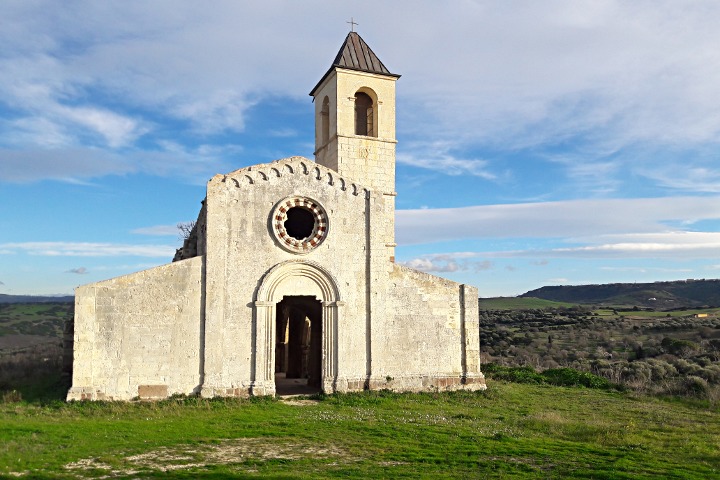

Further interventions are expected for the safety of the monument.
Not far away, in the valley behind the church there is an important and singular site of naturalistic interest: a petrified forest. Here you can admire fossil trunks dating back to twenty million years ago, which have been preserved until today as a result of an ancient volcanic eruption … Definitely an interesting destination for a next trip!
